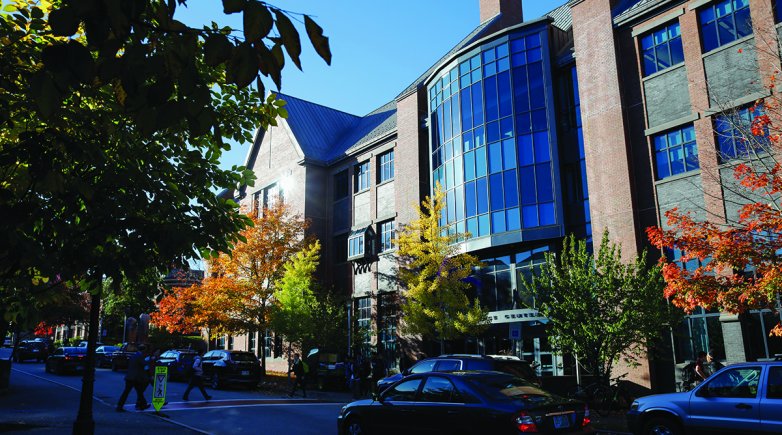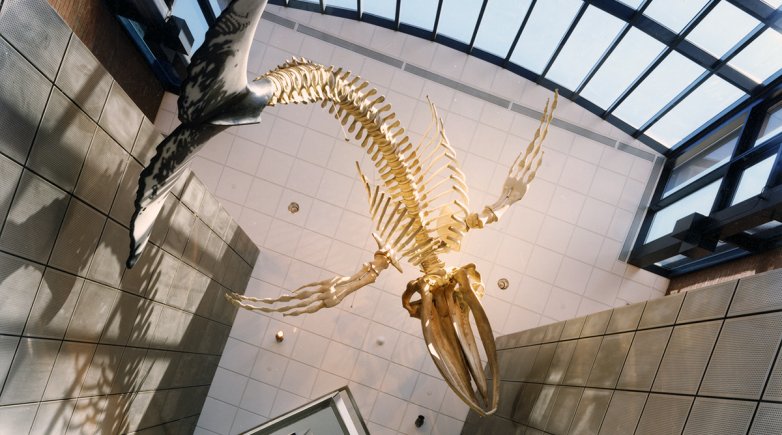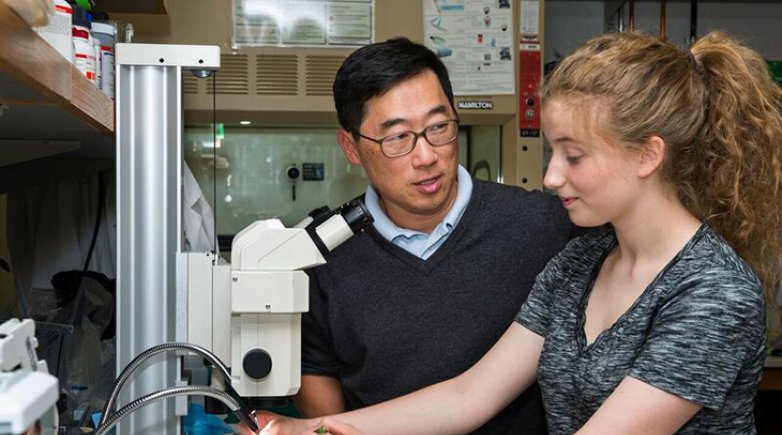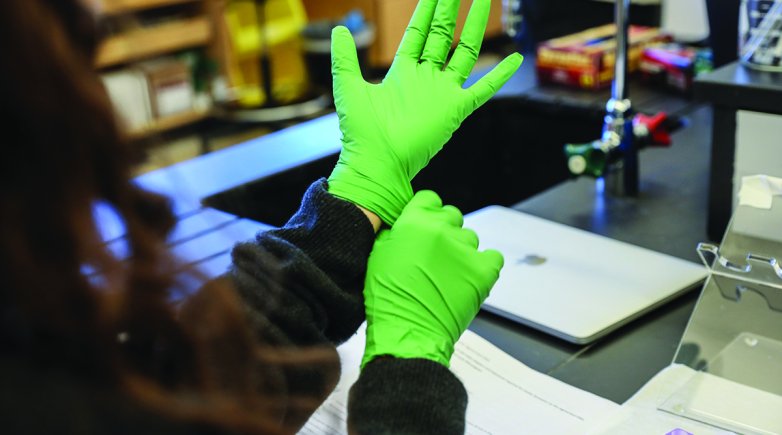Along with many other Exeter students, Chowdhury and his fellow Physics Club members take advantage of the Design Lab, a well-outfitted maker space located in the physics wing of the Phelps Science Center. Featuring a 3D printer, laser cutter and other high-tech tools, the lab was the result of student demand for a more informal workshop space to build, create and learn. “People are always in there trying to build their own electric skateboards and scooters,” Chowdhury says.
“It’s a different place than the rest of the building,” Léger says of the Design Lab, which was added more than a decade after the Science Center opened. “There’s room for play in science — it doesn’t have to be tedious.”
For Saltman, the Design Lab is a perfect example of the way the Science Center and the curriculum has been able to grow and change along with technology and science itself. “Things we couldn’t necessarily have envisioned happening in 2001, we can do the configuring to make it happen,” he says. “A lot of that is due to the flexibility of the common lab spaces, where we can move things around to make that work.”
As flexible as the building may be, students studying science at Exeter aren’t confined within the walls of Phelps. Over the years, the curriculum has grown to include an array of field courses, including ornithology, earth science, ecology and animal behavior. It’s not uncommon, Léger says, to see one of the Academy’s familiar Red Dragon vans heading out of Phelps at 7:30 a.m. for a field trip.
In her marine biology class last year, Huang took a trip to a mud flat, where she dug for Nemertea worms and collected organisms on a rainy, cold day in January. “It felt really great to still be pursuing science even in this extreme weather,” she says. “When we got back, we looked at the organisms under a microscope and categorized them, then went through the process of scientific inquiry to see how they were adapted to the environment of the mud flat.”
Above all, Chowdhury and Huang appreciate the openness and collaborative spirit of learning science at Exeter. Huang remembers working with her physics classmates to figure out how to launch a ball into a cup as their final project of the course. “Finals week is usually associated with a lot of stress and tests,” Huang says. “But here we could bounce ideas off of friends and enjoy comparing our approaches to physics.”
Chowdhury describes the third-floor lounge in Phelps, with its high ceilings, comfy chairs and sweeping view of campus, as an ideal place for relaxing, socializing — and doing science. For the Robotics Club, he and other members recently set up a large playing field for their robots there. “I’m working on programming the robot to accomplish all the game objectives,” he says. “I think we’re getting a dedicated lab space soon, but for now the lounge is the only place where that stuff fits.”
Teaching the scientists of tomorrow
Over the past decade, the Science Department has seen a steady increase in the number of students enrolled in its courses, as well as an increasing number of those choosing to take advanced science courses and electives. In 2021, the annual enrollment in science classes totaled 3,045, including 427 enrollments in 500-level classes or higher. “We’ve adjusted our curriculum in ways that support the students better,” Saltman says.
Faculty are also meeting student demand for opportunities to engage in college-level research. “Our students have done research at their old school, or over the summer, and they want to continue,” Léger says.
After taking an earlier genetics course at Exeter, Leena Hamad ’17, for example, applied and was selected for Biology 670, a research course that delves into the genetics of Drosophila melanogaster, the common fruit fly. Initiated in 2012 as part of “StanEx,” a collaboration between Dr. Seung Kim ’81, professor of developmental biology and of medicine at Stanford, and Science Instructors Townley Chisholm and Anne Rankin, the course teaches Exeter students how to genetically modify fruit flies and breed their own new fruit fly lines.



